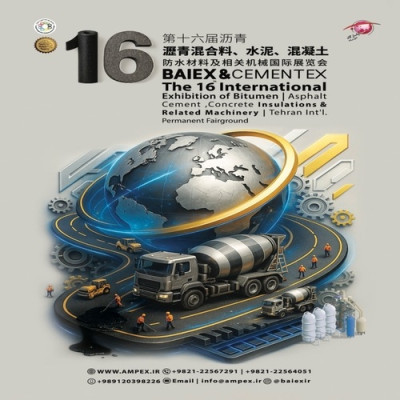Artificial intelligence has significantly influenced many sectors, reshaping traditional operations through automation, data analysis, and improved efficiency. One of the most affected industries is shipping and logistics, a crucial element of the global economy responsible for moving goods across borders, managing intricate supply chains, and facilitating international trade. Due to the scale and intricacies involved, incorporating AI into this field has opened up new avenues for enhancing productivity, precision, and innovation. This article examines how AI is revolutionizing the shipping and logistics sector by exploring its various uses, advantages, obstacles, and future potential.
AI’s Influence on Shipping and Logistics
AI’s strength lies in its ability to process massive datasets and identify patterns, which is particularly valuable in the complex world of shipping and logistics. The industry handles an overwhelming amount of data—ranging from shipment tracking and inventory to weather and traffic information. Traditionally, managing such data required labor-intensive methods, often susceptible to human mistakes. AI now automates and refines these operations, leading to more dependable and streamlined workflows.
1. Route Optimization
One of AI’s key benefits in logistics is optimizing routes. Whether it involves ocean-going vessels or delivery trucks, finding the quickest and most cost-effective route is crucial for cutting down delivery times and costs. AI can analyze real-time traffic, weather, and port congestion data to suggest the best routes.
For instance, shipping companies employ AI systems to detect and bypass busy areas, allowing for smoother navigation. Similarly, delivery giants like FedEx and UPS utilize AI to enhance their vehicle routes. These AI tools constantly track variables such as fuel usage, road conditions, and time windows, adjusting routes in real-time to ensure timely and economical deliveries. This results in fuel savings and shorter delivery times, improving customer satisfaction. The improvements can be easily tracked through specialized logistics dashboards.
2. Predictive Maintenance
In shipping, unexpected downtime is costly, making predictive maintenance through AI a vital asset. By analyzing data from equipment such as trucks, ships, and cargo systems, AI detects potential wear and tear early, preventing sudden failures and allowing for optimized maintenance schedules.
For example, large ships equipped with numerous sensors collect data on engine health and fuel consumption, which AI then assesses to predict when parts will need repairs. This foresight reduces delays caused by mechanical failures, ensuring timely deliveries. Similarly, AI monitors trucks for issues such as tire pressure and engine performance to avoid breakdowns during transit.
3. Enhanced Supply Chain Visibility and Demand Prediction
AI plays a pivotal role in providing greater visibility throughout the supply chain. Previously, supply chains were siloed, making it difficult to track goods at different stages. AI allows for real-time monitoring, giving companies and customers complete transparency over shipments. AI systems can detect bottlenecks, issue alerts about disruptions, and help logistics managers take swift actions to avoid delays.
AI is also crucial in forecasting demand. By analyzing historical data, it can predict future product demand, enabling businesses to manage inventory more effectively. This ensures adequate stock levels without excess or shortage, saving companies from financial losses tied to overstocking or stockouts. For example, online retailers use AI-driven demand forecasts to efficiently allocate resources across distribution centers.
4. Warehouse Automation
AI has also revolutionized warehouse management. AI-powered robots now handle tasks such as sorting, packing, and transporting items, working alongside human employees to improve productivity and minimize errors. These robots are guided by AI to follow optimal routes and sequences for processing items.
Amazon's fulfillment centers exemplify this transformation, where AI-driven robots transport shelves of goods to human workers for packing, dramatically reducing the time required to find products and lowering labor costs. AI also automates inventory management, ensuring timely reorders when stock levels drop.
5. Autonomous Vehicles and Drone Delivery
AI is pushing forward the development of autonomous vehicles and drones, which could transform logistics and shipping. Self-driving trucks could address driver shortages and improve operational efficiency by operating around the clock without breaks. These vehicles use AI to navigate, make real-time decisions, and avoid obstacles, reducing delivery times and expenses.
Drones, meanwhile, are being explored for last-mile deliveries in remote or congested areas. AI equips drones with the ability to navigate complex environments and optimize their flight paths. While challenges remain, companies like Amazon and Google are actively testing drone delivery, and AI could make this a widespread solution in the near future.
6. Risk Mitigation and Fraud Detection
Shipping and logistics face numerous risks, from natural disasters to fraudulent activities. AI assists in risk management by identifying patterns that suggest potential threats. For instance, AI can monitor weather conditions and provide advance warnings, helping companies avoid disruption. Additionally, AI systems can scan financial records and shipment data to detect fraud, protecting companies from costly losses.
7. Customer Support and AI Chatbots
AI has also enhanced customer service within logistics. Chatbots, powered by AI, can manage various customer inquiries, from shipment tracking to delivery schedules. These virtual assistants provide immediate answers, improving customer satisfaction and lightening the load on human service teams.
Companies like DHL and FedEx utilize AI chatbots to allow customers to track orders and get quick responses to common queries. This streamlines operations and allows human employees to focus on more complicated tasks.
Barriers to AI Adoption in Shipping and Logistics
Despite AI’s potential, several hurdles remain, particularly the high cost of implementation, which can be a significant burden for smaller companies. Furthermore, the fear of job losses due to automation raises concerns in the workforce. Data privacy and cybersecurity are also critical, as AI systems handle vast amounts of sensitive information that could be vulnerable to breaches.
The Future of AI in Shipping and Logistics
While challenges exist, the future of AI in shipping and logistics is promising. As AI technology advances, it will handle more complex tasks and provide even more accurate predictions. Autonomous vehicles, drones, and robots are likely to become standard in the industry. AI will continue to optimize supply chains, reduce costs, and enhance customer experiences, ultimately reshaping global trade and transportation.
BY WPB




















